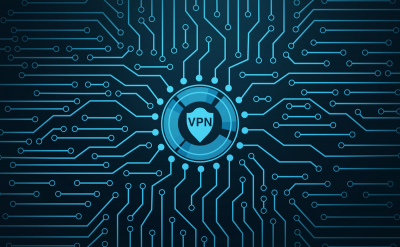Highlights –
- A single service provider can streamline your operations and manage your networking, connectivity, hardware maintenance, security, and other IT requirements.
- When an issue arises, you may depend on their expertise for a speedy resolution, relieving your IT personnel so they can focus on other responsibilities.
Network modernization can streamline IT with scalable solutions. The right partner has the expertise to design, install, and maintain the unique requirements of your network. One provider can offer seamless connectivity, access, and security. It also provides personalized support and a financial relationship to maximize your tech investment.
Multiple providers service legacy components and systems. Knowing which vendor to call for troubleshooting or advice on growing network challenges is difficult.
Complexity increases performance issues, security vulnerabilities, and inefficient IT spending. Most organizations use lean IT teams to meet user demands. 52% of IT leaders say a lack of trained IT professionals is a problem. Their organizations struggle to self-manage a complex, evolving network with limited resources. Hence, businesses are demanding more from their service providers.
This blog throws light on how an ideal technology partner can create and integrate complete solutions that meet your unique business objectives. A single service provider can streamline your operations and manage your networking, connectivity, hardware maintenance, security, and other IT requirements.
Simplifying network management
Consolidating service providers improves network visibility and performance. When multiple vendors provide internet, Ethernet, routing devices, and Wi-Fi, none of them understand your network as a whole. Each of them has its security, service, and issue-resolution processes. Then, the limited IT resources must coordinate maintenance and end-user performance.
On the other hand, a single partner can monitor the entire network, improve its settings, and reveal efficiencies across components. This approach decreases network downtime risks. Routine monitoring can keep your company ahead of any problems, as a skilled team is ready to respond if something goes wrong. Frost and amp; Sullivan estimates network downtime costs mid-market companies USD 4,000 each outage, which shows how important comprehensive assistance is.
Cybersecurity concerns are easy to address with a supplier who knows your network. The proper partner can tailor solutions for site-to-site Ethernet, guest and employee internet access, firewalls, unified threat management, private cloud connections, and other safeguards that isolate critical data and protect the firm from online dangers.
IT can rely on one vendor to identify security threats and respond quickly across numerous network components. The specialists who simplify and secure your daily IT management can also help you plan. A provider who offers multiple networking services understands your needs, goals, and obstacles. As your company grows, you’ll have a partner to create or extend network architecture and support services.
Capabilities for successful network modernization
Network modernization drives digital transformation and better performance. Look for a partner with comprehensive capabilities to consolidate various services. These services should handle your most time and risk-intensive IT concerns and the connectivity between them. Choose a collaborative partner with the newest technologies to help your company innovate. Here are a few capabilities you need to look for –
Agility
Modern IT avoids one-time hardware purchases and scalable service contracts. Rapid shifts to cloud computing, remote work, and bandwidth-heavy applications like video streaming highlight the need for an agile network. McKinsey estimates the COVID-19 pandemic accelerated digital operations adoption and customer interactions by three to four years and changed executives’ perspectives about the role of technology.
Business organizations and their partners must be more agile to compete. Your network should be able to adapt to changing usage patterns, application requirements, connections, and devices with the proper service provider. IT teams with minimal staff will also be able to optimize routine maintenance and offload network component management. Evaluate potential partners’ flexibility, range of technologies, and capacity to drive network design and management so your team can focus on innovation.
Security
IT teams need to prioritize cybersecurity. Remote work and virtual apps have significantly increased network footprints and attack surfaces. The biggest fear of 60% of IT personnel is exposure to client data. A modernized network controlled by a single service provider can offer peace of mind with reliable security solutions, access management, and network device visibility. Automated firewall upgrades, UTM, and 24/7/365 network monitoring help protect your network with minimum IT effort.
Keeping up with patches and upgrades is a challenge for most enterprises regarding network security. Ever-changing security risks tax IT teams’ internal resources. Sixty-two percent of CISOs expect a global cybersecurity skills shortage will worsen in five years.
A network service provider with 24/7 monitoring and support can help protect your data. Having specialists engineer monitor your network can prevent data breaches and cyberattacks. When an issue arises, you may depend on their expertise for a speedy resolution, relieving your IT personnel so they can focus on other responsibilities.
Operational Efficiency
Toggling between isolated platforms to run a network is costly. A single partner simplifies and improves network management. Better operational efficiency can streamline operations, promote IT sustainability, improve end-user quality, and lower network operating costs.
Collaboration with a qualified network service provider can simplify numerous IT chores. These include patching and firmware updates, network traffic management, proactive security measures, and adding locations to Wi-Fi networks and WANs. Consolidating systems with a single partner makes software-defined networking easier to execute across multiple hardware and software components.
Consolidating networking and connectivity services saves administrative burdens. Working with one partner speeds up billing and service contracts. Plus, managed services can remove upfront capital investments for hardware maintenance and lifecycle planning.
Conclusion
Your organization’s success depends on an agile, secure network. You need IT resources that can handle today’s demands and bend to meet tomorrows. Your network benefits from consolidation and modernization. McKinsey said companies who kept up with digital transformation earned operational and financial benefits. Executives in digitally agile companies reported twice as much revenue growth as their less agile rivals.
A proper partner can deliver comprehensive network upgrading that adapts to your business. Collaborating with a qualified service provider can help you defend against growing security threats. Consolidation saves money and time compared to maintaining several service providers.








































































